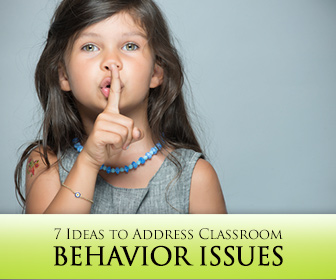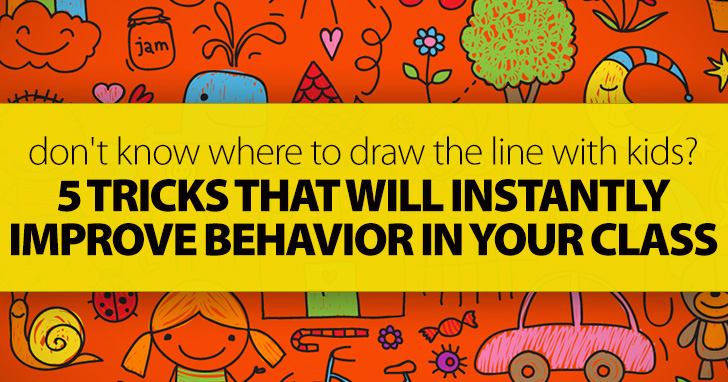How to Address Classroom Behavior Issues: 7 Ideas to Keep Your Kids Organized and Productive


Their innocence, energy and natural curiosity make them irresistible to the many, many teachers who value and cherish these qualities among others. I've even heard some teachers say that they feel younger when working with kids. Though children are a true joy to be with, working with them is also a challenge. And, of all the challenges we need to face, one of the toughest is managing their behavior. It's not always that easy since many times it requires the help and collaboration of parents. Even so, there is a lot we can do on our own to reinforce what kind of behavior we expect from our students. The first thing we need to help them understand is what appropriate and inappropriate behavior is. How, you might ask? Take a look.

One of the first things kids need to understand in life in general is what a consequence is. What is amazing about kids is that from a very early age they naturally begin to understand that for everything they do, there is a reaction from others. Whether it be delight or anger, kids understand that what they do will produce a reaction. They even test the boundaries just to see what might happen. So, as far as understanding reactions go, there isn't a lot we need to do in that department. However, where students are concerned and just to get everyone on the same page, it is important to explain that there are different types of consequences and what natural and logical consequences are.
Natural consequences are the inevitable result of a child's actions. Children are responsible for these actions and they are not administered by the teacher.
Logical consequences happen as a result of a child's action, but are imposed by the teacher. Logical consequences are useful in different situations. For instance, when something a child does could result in harm to that child. It is important to make sure that logical consequences need to be reasonable and related to the problem, and to let both the child and the teacher keep their self-respect.
Here are some recommendations when using natural and logical consequences:
An interesting activity many teachers use to make sure everyone is on the same page concerning behavior is to make a list of things kids typically do that is considered inappropriate. Then you can have them read it and tell you why it is wrong and what a natural consequence and or logical consequence could be. For instance, one of the items on the list could be: Throwing classroom objects. Kids could first express what they thing is wrong with that and then think of consequences. A natural consequence would be that the flying object could hit another child and hurt them. A logical consequence is that you as their teacher might have to take their school supplies away and or talk to their parents.
Every classroom should have a set of clear rules. It is also recommendable to have these rules on the wall so they are always present in their mind. Remember that kids should understand rules are a means to ensure that everyone is treated with respect. They should also participate in setting these rules the first day of class. You can even use examples of consequences to guide them to come up with the rules “on their own”. This is very positive because kids feel like they are rules they have created.
OK, this part is very important. So, you have discussed natural and logical consequences, gone over examples of inappropriate behavior and set clear rules. Now, what happens if rules are broken. Here you need to establish what the logical consequences will be. I recommend you try to think ahead what type of situations may occur and plan what will be done. Also, keep in mind that this might require a meeting with other teachers and even the head of the institution in order to ensure everyone has the same criteria where consequences are concerned.
There is a lot you can do to reinforce good behavior in children. It might be better to focus on what is acceptable, and appropriate while things are going well. There are games and activities that can help in this area. Have them work together constructively on how they should be doing things and what you expect of them.
If you keep things positive and you do it with respect there is nothing you won't be able to handle. If an issue with behavior does get out of hand, you might need some support in handling that specific case. Perhaps it might call for an institutional decision or the need to get parents involved. In any case, remember you need to address issues with inappropriate behavior any and every time they come up.